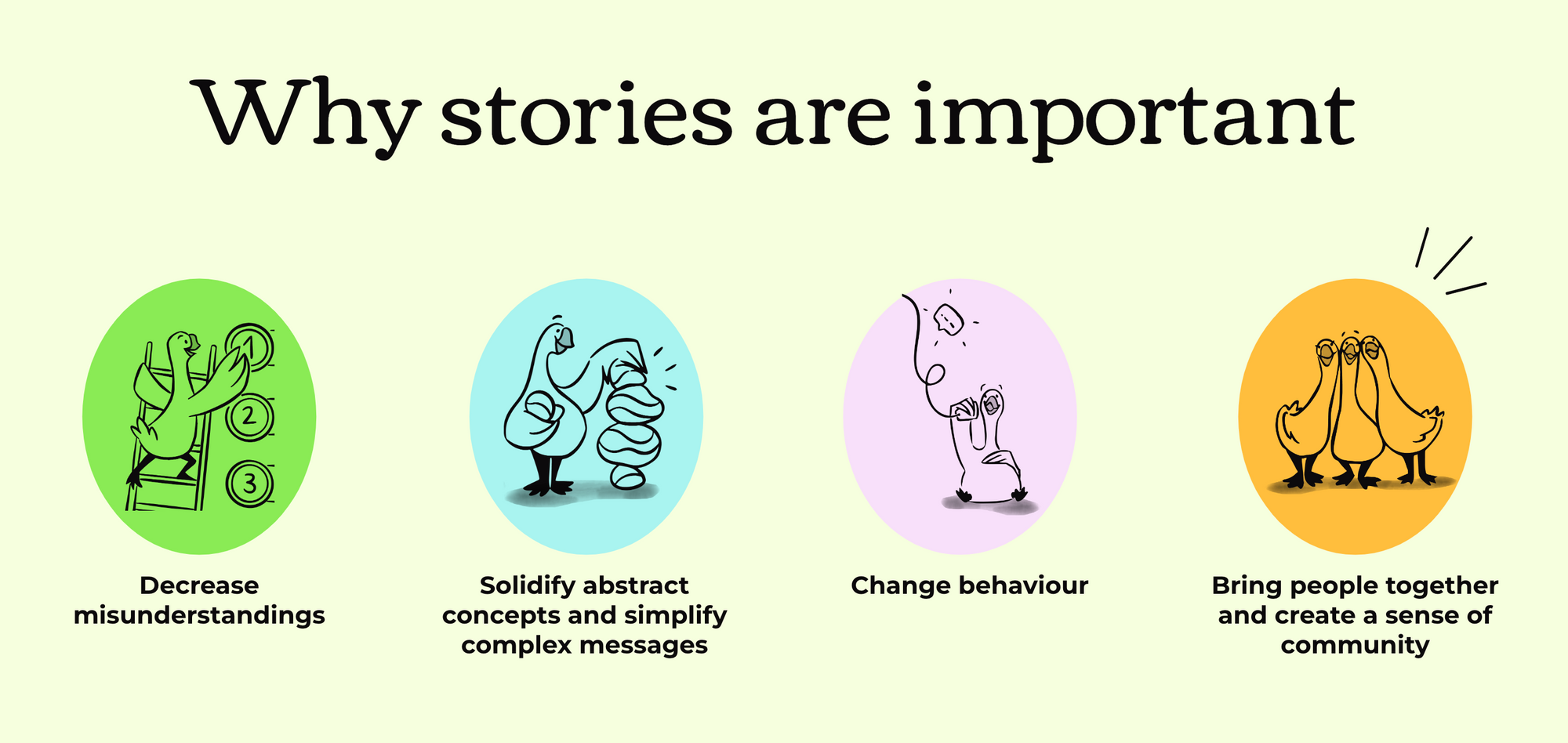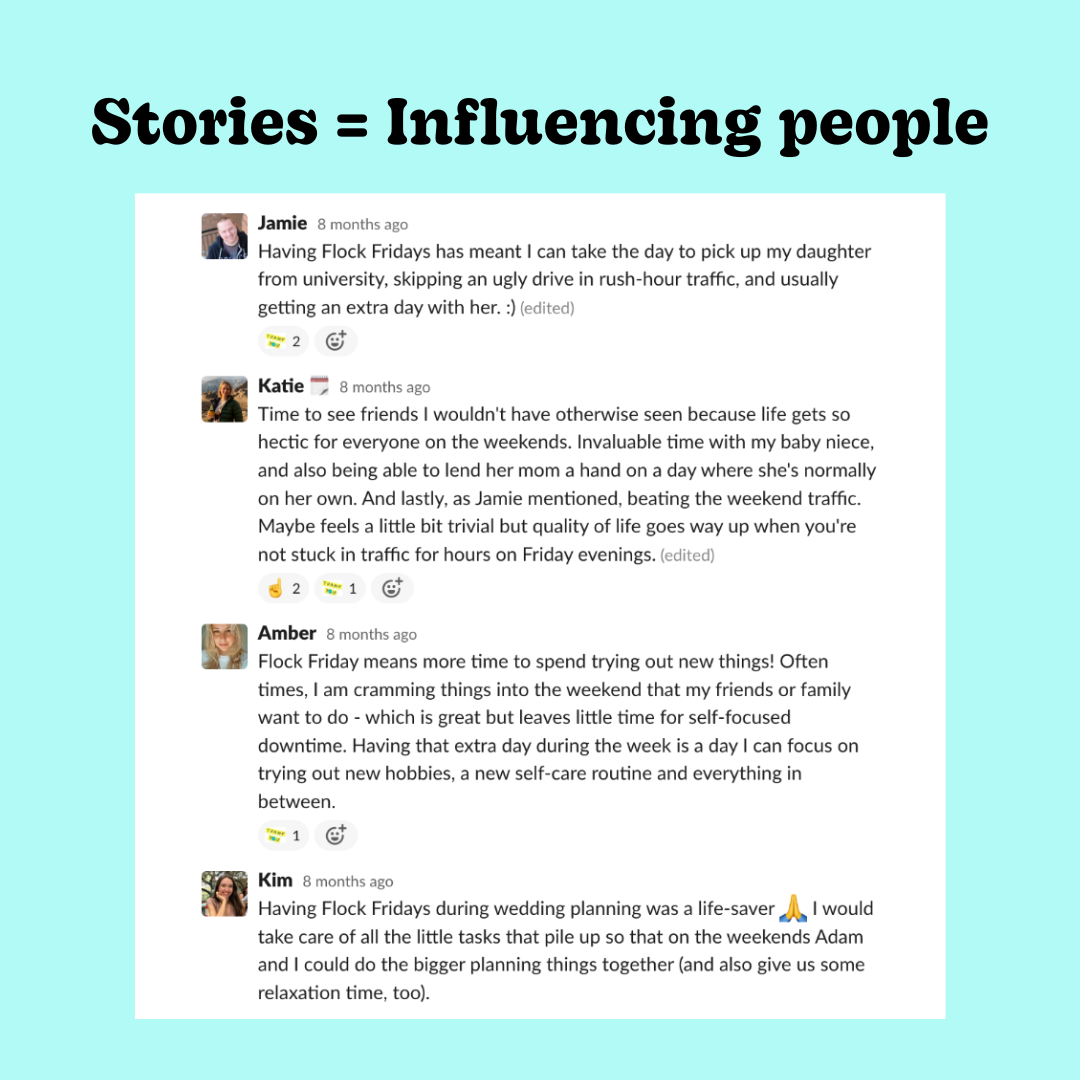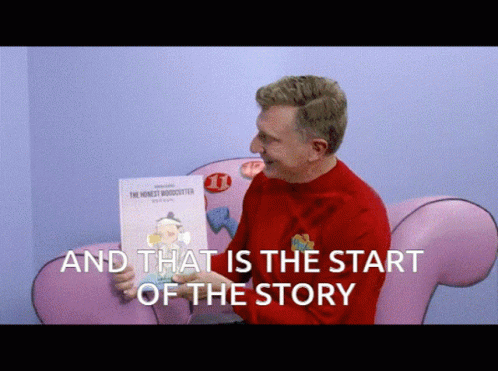The Power of Narratives: Why Every Team Needs Storytelling
Can you remember the last story you told at work? And not about your weekend escapade, but a gripping story that helped you in your role and even helped grow the company? If you’re drawing a blank, hang tight.
Hi, I’m Katie. I head up the Brand Experience (our special mix of marketing and customer success) team here at Goosechase. I’ve worked in and around branding and marketing for 15 years at a wide breadth of organizational types and company stages. I've seen it all - from sprouting startups to mammoth-sized companies navigating colossal shifts. Storytelling is my bread and butter. It's what makes a brand resonate, igniting sparks of curiosity. But hold on, this isn't just a spiel about marketing's love affair with stories. This is a spotlight on the transformative magic of storytelling, irrespective of departments.

What is storytelling?
Hubspot has a definition of storytelling I really like because it goes as far as to include the impact of stories, not just the act of telling a story.
“Storytelling uses words to create new worlds and experiences in a reader or listener's imagination. Storytelling can impact human emotions. It can also lead people to accept original ideas or encourage them to take action.”
Who needs to tell stories?
Storytelling is a required skill for anyone trying to engage, influence, teach, or inspire others. Yes, that means marketers. But it also means engineers trying to convince their team to choose a specific solution to a problem. Or managers trying to teach their employees a new way of working. Or people and culture departments engaging staff in a team social or charity drive.
Picture this: Two scenarios of a CEO speaking to their entire organization, setting a goal for their online pet-training venture. Which one is more inspiring?
Option A: A straightforward presentation stating a 50% reduction in response time to pet parents is what the business needs to achieve this quarter, backed by statistics highlighting customer retention benefits.
Option B: A heartfelt narrative of Betty, a lonely mother adjusting to an empty nest. Having never had a pet before, she adopts Sam, a golden retriever, in search of companionship. As Sam adjusts to his new home, he spends his nights howling. Betty tries everything to get Sam to calm down. Special treats, extra soft blankets, she even played him Enya one night. She’s exhausted, he’s exhausted. She’s worried for Sam. She wonders if she made the wrong decision adopting him. She feels in over her head. She feels guilty. Is she really considering taking Sam back to the shelter? She feels like she’s swimming in the ocean with no land in sight. She turns to us, seeking a lifeline. By vowing to halve our response time, we’re not just improving metrics; we're being the anchor in Betty’s storm.
What would you find more motivating to work on?

4 Benefits of Telling Stories at Work
Telling stories is one of the most powerful means that team members have to influence, teach, and inspire. Storytelling forges connections between people, and between people and ideas. Here are 4 ways stories can improve communication in the workplace:

- Stories decrease misunderstandings: According to psychologist, professional storyteller and executive coach Lani Peterson, “When we hear information being ticked off like in bullet point lists, the language processing parts in our brain, get to work, translating those bullet points into story form where we can find our own meaning. The problem with this,” Lani points out, “is that the story we come up with in our mind may not be the same one the speaker is intending to convey through data.” The more a speaker conveys information in story form, the closer the listener’s experience and understanding will be to what the speaker actually intended.
- Stories solidify abstract concepts and simplify complex messages: Vanessa Boris of the Harvard Business Review explains that “good stories can contain multiple meanings, so they’re surprisingly economical in conveying complex ideas in graspable ways.”
- Stories change behavior: Hubspot’s Ultimate Guide to Storytelling outlines that this is because “stories engage our emotions. So, even if you're stressed out and overwhelmed, you can still connect with a story. That connection might lead you to be less critical about facts, less defensive, and more open to changing your ideas.”
- Stories bring people together and create a sense of community: Narratives forge bonds, creating shared experiences and a sense of belonging. It’s been said that stories are what make us human.
Paul Smith, renowned author of Lead with a Story: A Guide to Crafting Business Narratives that Captivate, Convince, and Inspire, lists these five most common goals for storytelling in business:
- Inspiring the organization
- Setting a vision
- Teaching important lessons
- Defining culture and values
- Explaining who you are and what you believe.
Storytelling is an unparalleled force in shaping cultures, values, and identities. So, can any other tool truly match its prowess?
Data vs. Storytelling
Often times people pit data against storytelling. Strong irrefutable data should be able to do everything we’ve talked about so far, right? They are not competitors. Data and storytelling are like chocolate and peanut butter, they not only work together, they actually make each other better.
Data makes stories stronger and more trustworthy, and stories make data easier to understand and easier to remember.
The other great benefit to employing stories instead of data to convince, stories work for all types of learners! Visual learners get the vivid images in their minds. Auditory learners focus on the words and how they're spoken. Kinesthetic learners resonate with the emotions a story stirs up.
They can also be considered different tools for different purposes:
- Use data to make decisions
- Use stories to get everyone bought in and rallied around those decisions
Take the example below:
Over 2 years ago, we decided to make the move to a 4-day work week. We ran it as a test first, and then based on the data you see on the left, we made the business decisions to drop Fridays. Data led to that decision.
Now, when we are hiring and we want to impress upon a potential employee the value of a 4-day work week, we don’t pull up the data. We share stories from our employees. What you see on the right. Stories of what they have been able to do with that extra time. Spend more time with their families, pick up new hobbies, wedding planning, or just relax. It’s these emotional and relatable stories that really bring the impact of the decision to life.


What makes a good story?
So we know the power of storytelling and its significance. But, let's face it, not every story grabs our attention. So, what sets a compelling story apart?

Allow me to share the BORE ME model (yes, quirky name, but stick with me). An engaging story is:
- Believable: It's authentic, making readers feel that it could genuinely happen, building trust and engagement.
- Organized: It has a clear structure, making it easy to follow and grasp the main message.
- Relatable: It connects with the reader, reminding them of familiar people, places, or experiences.
- Entertaining: It's not just informative, but also enjoyable, keeping the reader hooked.
- Memorable: Be it through humor, shock, or inspiration, a great story lingers in the mind.
- Educational: Beyond entertainment, it offers something new, expanding the reader's understanding.
In short, a good story isn't just about telling; it's about connecting, teaching, and leaving a mark. And who on your team doesn’t need to do that?

What is Goosechase?
At Goosechase, experience is everything. Originally inspired by scavenger hunts, Goosechase is an online platform that enables organizations and schools to engage, activate, and educate their communities through delightful interactive experiences. Sign up and try creating a free recreational Experience, or check out our Pricing!





